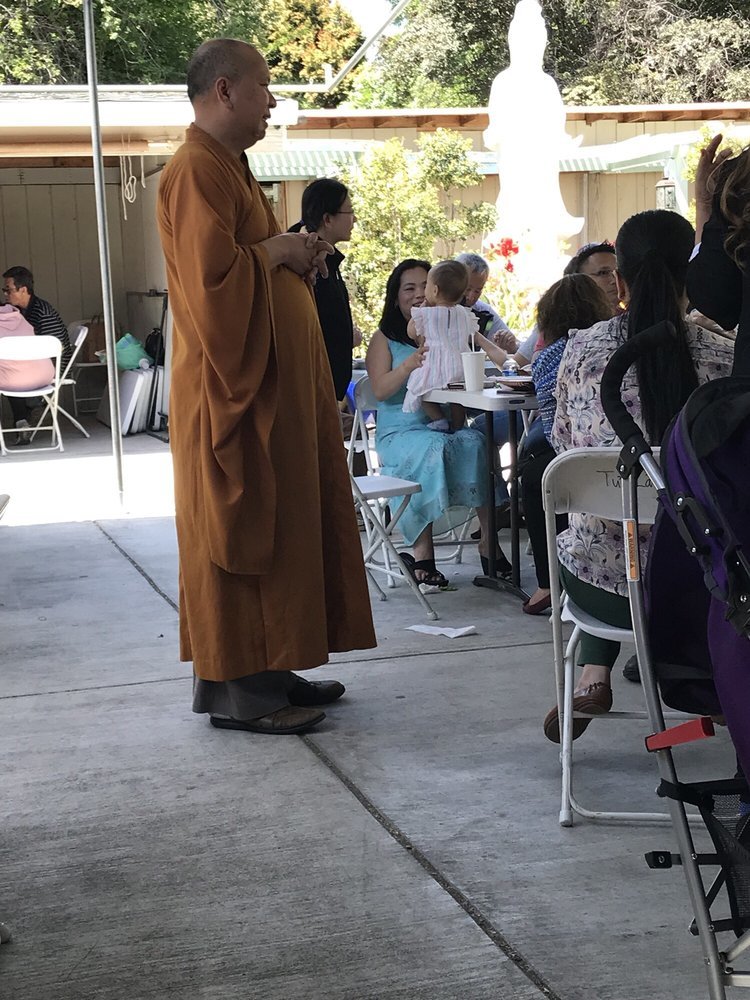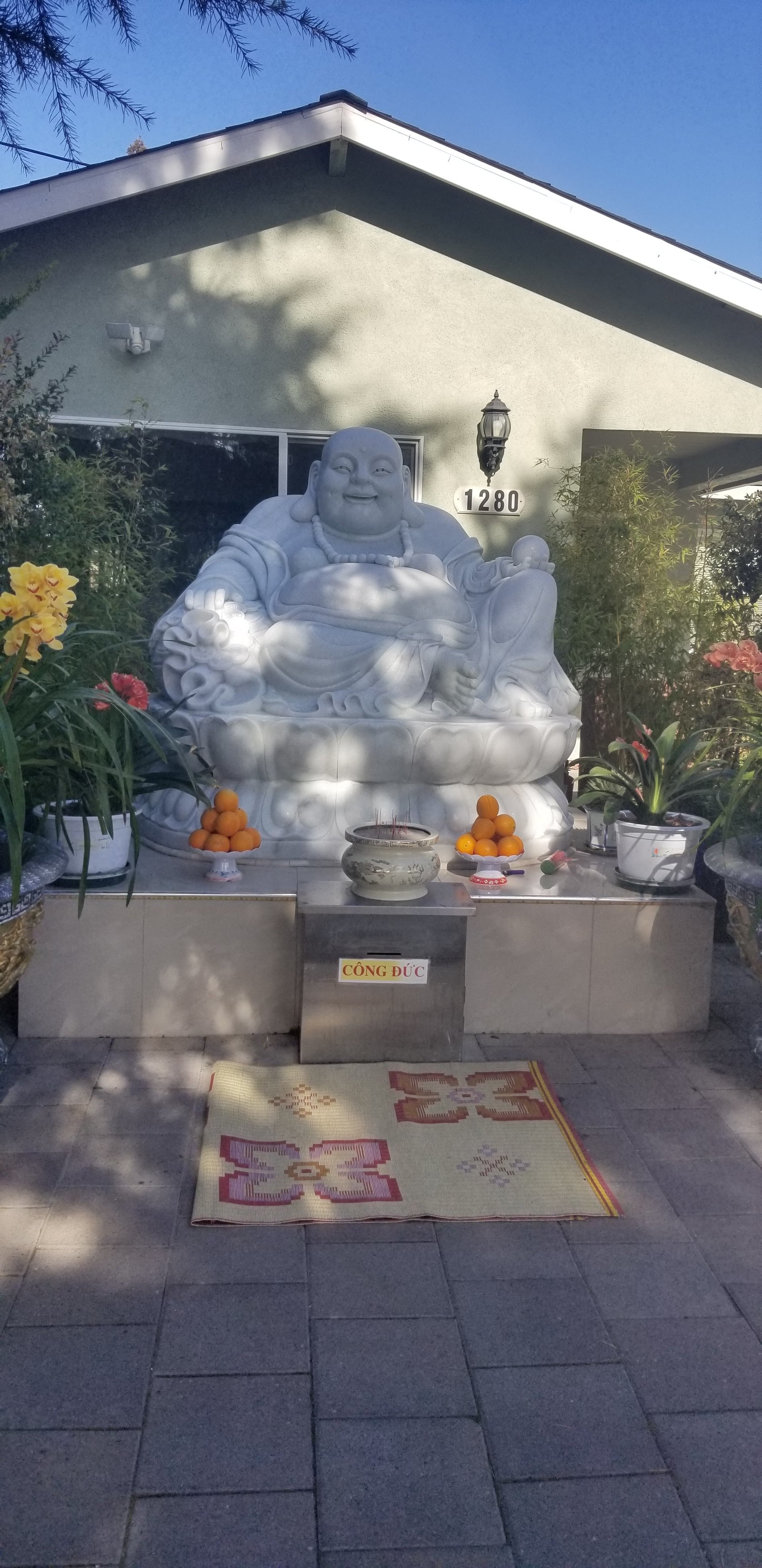Sight
Sight is a crucial experience to the temple visitors because it allows them to visualize Budda and other religious figures in the form of a statue as seen in the left. Furthermore, sight allows them to identify the most important person to the temple: the lead monk. The lead monk is often dressed in distinct garments as seen in the left that would distinguish him from other people in the space so that he is viewed with wisdom and authority.
The importance of sight is quite similar to touch due to materiality, but the statues highlight another aspect of Dickinson and Aiello's article about materiality. They argue that "understanding communication as material, then, does not deny the importance of discourse or symbolization; rather, it weaves together discursive and material communication into a more complex whole that allows us to critically account for the ambience of the city" (Dickinson and Aiello 1297). The statues are made out of granite which conveys sacredness to the audience through their sheer size and weight. Therefore, the statues not only convey their symbolic sacredness through their representation of Buddhist figures, but the sight of their materiality weaves into the temple's atmosphere as a place of sacredness and worship.


